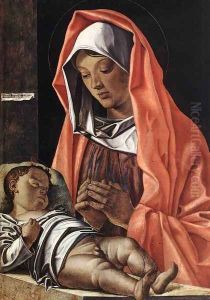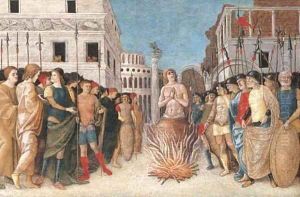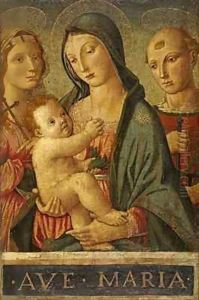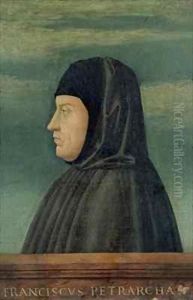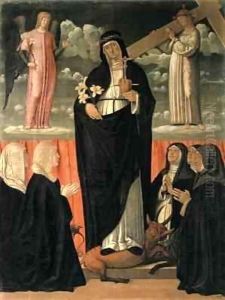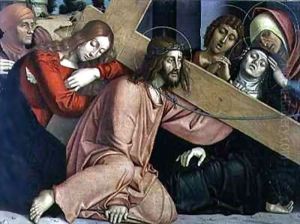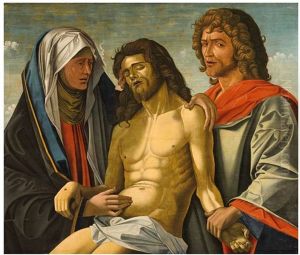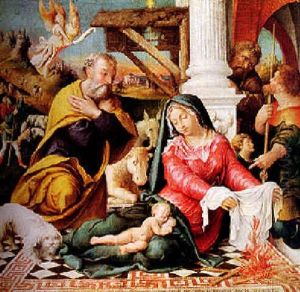Francesco Bonsignori Paintings
Francesco Bonsignori, born in 1455 in Verona, Italy, was a notable painter of the Renaissance period, whose work contributed significantly to the artistic landscape of Northern Italy during the late 15th and early 16th centuries. His career unfolded during a time when the Renaissance was reaching its peak, bringing about a transformation in art that emphasized realism, human emotion, and a deep exploration of perspective and anatomy. Bonsignori's contributions, however, are often overshadowed by the towering figures of his era, such as Leonardo da Vinci and Michelangelo, but his works remain an essential part of understanding the breadth and depth of Renaissance art.
Bonsignori's early life was steeped in the rich cultural and artistic environment of Verona, where he was initially trained. He later moved to Mantua, where he became closely associated with the Gonzaga court, an influential patron of the arts during the Renaissance. This association provided him with significant commissions and allowed him to develop a style that, while reflective of the broader trends of the Renaissance, also bore his unique imprint. His works are characterized by their meticulous attention to detail, vibrant color palette, and the delicate rendering of human figures, which often exude a sense of serenity and grace.
Throughout his career, Bonsignori was revered for his religious paintings, portraits, and frescoes, which not only adorned churches and palaces in Verona and Mantua but also garnered the admiration of patrons and art lovers far beyond these cities. One of his most significant contributions was his ability to blend the realistic portrayal of human figures with the spiritual themes of his religious works, imbuing them with a depth of emotion and piety that was profoundly moving for viewers of his time and remains so today.
Despite his success and the esteem in which he was held during his lifetime, Francesco Bonsignori's name is not as widely recognized as some of his contemporaries. Nevertheless, his body of work continues to be studied and appreciated for its artistic merit and historical significance, offering insight into the nuanced developments of Renaissance art in Northern Italy. Bonsignori passed away in 1519 in Mantua, leaving behind a legacy that, while perhaps quieter than some of his contemporaries, is emblematic of the rich tapestry of creativity and innovation that defined the Renaissance period.
